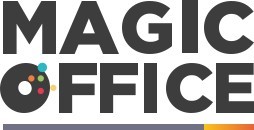
Understanding Administrative Management Processes
Grasping the Fundamentals of Administrative Management
Administrative management is a cornerstone of any successful business, whether it's a large corporation or a small business. It involves a variety of processes and procedures that ensure the smooth functioning of an organization. Understanding these processes is crucial for achieving organizational goals and supporting the overall business strategy.
At the heart of administrative management lies the need to coordinate various activities, manage resources efficiently, and ensure that employees have the necessary skills and training to perform their tasks effectively. This requires a deep understanding of management theory, including the principles laid out by Henri Fayol, which emphasize the importance of planning, organizing, leading, and controlling.
Key Components of Administrative Processes
Administrative processes encompass a wide range of activities, from project management to developing policies and procedures. These processes are designed to streamline operations and enhance productivity. Effective time management and organizational skills are essential for managing these processes, ensuring that tasks are completed on time and within budget.
Another critical aspect of administrative management is the development of a robust organizational structure. This structure provides a clear framework for decision-making and helps align the efforts of team members with the organization's strategic goals. By implementing sound management practices, businesses can foster a culture of continuous improvement and adaptability.
Practical Applications and Continuous Improvement
Incorporating Fayol's principles into daily operations can help businesses improve their administrative processes. For instance, by focusing on planning and organization, companies can better anticipate changes and adapt to new challenges. This proactive approach not only enhances efficiency but also supports the development of a resilient administrative team.
For those interested in enhancing their administrative processes further, exploring enhancing efficiency with Sun Accounting Invoice Software Integration can provide valuable insights into leveraging technology for better outcomes.
Adapting to Regulatory Changes
Staying Ahead of Regulatory Changes in Administrative Management
Adapting to regulatory changes is a crucial aspect of effective administrative management in any organization. It's essential for businesses to remain compliant with ever-evolving laws and regulations, ensuring smooth operations while avoiding potential legal pitfalls. Companies must develop a proactive strategy for monitoring regulatory updates and implementing necessary adjustments to administrative processes as needed. This involves staying informed about industry-specific regulations and general legislative changes that impact the business. To efficiently manage these changes, an organization should consider the following steps:- Regular Training and Development: Continuous training for employees is key to keeping them updated with the latest regulatory requirements. This includes understanding both the practical application of changes and the theory behind them.
- Comprehensive Planning: Establishing detailed plans and procedures ensures that administrative processes align with new regulations. Planning also aids in identifying potential challenges before they become significant issues.
- Leveraging Management Tools: Utilize project management and administrative tools that streamline the integration of new policies and procedures. These technologies can help automate updates and provide timely notifications for compliance actions.
- Management Theories Application: Applying management theories, like the ones proposed by Henri Fayol, can offer insights into effectively adapting to change. Fayol principles encourage clear communication, defining organizational goals, and structured administration processes, which support regulatory adaptation.
- Involving Team Members: Engaging team members in the change process increases buy-in and reduces resistance to new procedures. Encourage open communication and collaboration to foster a culture of adaptability and continuous improvement.
Leveraging Technology for Efficiency
Streamlining Administrative Efficiency for Better Outcomes
In the rapidly evolving landscape of administrative management, leveraging technology is no longer optional but a necessity for companies in the UK. The integration and practical application of modern tools can transform how a business operates, enhancing productivity and ensuring that organizational goals are met more effectively. The introduction of project management software can revolutionize the administration process by simplifying the task of planning and executing projects. These tools help team members by offering a clear overview of the project status, aligning with Henri Fayol's principles on the importance of organized structure and coordination within an organization. Moreover, adopting management theory in administrative processes, like Fayol's principles, aids in the smooth facilitation of tasks, minimizing disruptions and optimizing work. Such theories focus on aligning organizational goals with practical strategies that improve day-to-day operations. To bolster this transition, businesses should consider extensive training for employees, focusing on both soft and technical skills necessary for technology adoption. This investment in team development can significantly enhance the capabilities of employees and administrative teams. It's also crucial to support new technological adoptions with strong procedures that are in line with existing business policies. Effective change management can lead the way for smoother transitions, encouraging employees to see value in new systems. Lastly, it's worth exploring options that further enhance work efficiency, such as providing convenient parking solutions, which can greatly improve the employee experience. For more insights into enhancing employee experience, businesses can explore tailored approaches to development planning. To summarize, incorporating technology effectively requires meticulous planning, efficient training, and strategic support systems, ensuring that all team members are aligned with the organization's administrative goals.Building a Resilient Administrative Team
Strengthening Your Administrative Team for a Robust Organisation
Creating a strong administrative team is crucial in achieving organizational goals and maintaining efficient business management. Start by clearly defining the roles and responsibilities of each team member, ensuring everyone understands their contribution to the organization's success. This clarity can be accomplished through effective management skills and well-structured policies. To further aid in team development, consider the following strategies:- Invest in Training: Providing ongoing training opportunities enhances the team's competency. Encourage employees to develop both administrative and management skills aligned with the goals of the organisation. Leveraging management theory, such as Fayol principles, can offer valuable insights and direction.
- Encourage Team Collaboration: Successful administrative teams operate cohesively. Facilitate an environment where open communication is encouraged, and diverse ideas are welcomed. This collective approach supports effective decision-making and problem-solving, ultimately benefiting the business.
- Empower with Technology: Introduce and utilize technology that aids in streamlining administrative processes. Regularly assess and upgrade tools and software to ensure teams have the best resources to enhance their productivity. This can lead to a more organized, efficient work environment.
- Focus on Process Improvement: Regularly review and update administrative procedures to align with the changing needs of the business and to address any noticeable inefficiencies. Consider adopting project management tools and techniques that emphasize the importance of time management and efficient workload distribution among employees.
Enhancing Communication and Collaboration
Strengthening Interpersonal Bonds
Effective communication and collaboration play a pivotal role in achieving organizational goals. At the heart of administrative management is the seamless integration of these elements to foster a cohesive business environment. Developing management skills centered around administering communication channels encourages a healthy work atmosphere. In an organization, clear and transparent exchange of information amongst team members is fundamental. By aligning communication with established procedures, employees can efficiently share insights and support administrative processes. This approach not only streamlines the flow of information but also fortifies the organizational structure.Implementing Practical Communication Techniques
Harnessing management theory, like that of Henri Fayol, offers practical techniques that can be employed to enhance communication within the administration process. Adopting Fayol principles in your business management practices encourages a deliberate focus on the planning and execution of communication strategies. To implement these principles effectively, consider:- Establishing clear policies procedures that define communication norms within the company.
- Encouraging ongoing training for employees to develop necessary skills to enhance communication.
- Utilizing project management tools to track communication and collaboration efforts.
Nurturing Collaboration for Team Development
Beyond communication, fostering a culture of collaboration is essential for the development and resilience of your administration team. Emphasizing team efforts aligns with organizational goals and catalyzes growth in management marketing initiatives. By empowering team members to contribute towards shared objectives, your business can achieve meaningful results. Consider leveraging support networks and change management strategies to bolster team cooperation. This not only aids in achieving short-term objectives but also embeds long-term collaborative spirit within your organizational structure. The theory of administrative management outlines the significance of aligning individual and team goals with overarching business objectives. When collaboration is prioritized, it becomes a potent driver for excellence in administrative performance.Measuring and Improving Administrative Performance
Evaluating Administrative Performance and Driving Improvement
Measuring administrative performance is a critical aspect of effective management. It involves assessing various processes and procedures that contribute to the smooth functioning of a business. This evaluation helps identify areas that require improvement and supports the development of strategies for achieving organizational goals. Adopting a comprehensive approach to evaluate administrative performance includes considering:- Key Performance Indicators (KPIs): Define clear KPIs aligned with the organization's objectives. These should cover all aspects of administration, from time management to the execution of business processes.
- Regular Feedback: Encourage continuous feedback from employees and team members. Utilizing their insights can provide valuable perspectives on administrative strengths and weaknesses.
- Training and Development: Implement ongoing training programs to enhance the management skills of the administrative team, thus supporting their professional growth and adapting to changing demands.
- Theoretical Frameworks: Incorporate management theories such as Fayol Principles and Fayol Management Theory to guide the evaluation process and ensure practical applications in real-world scenarios.













